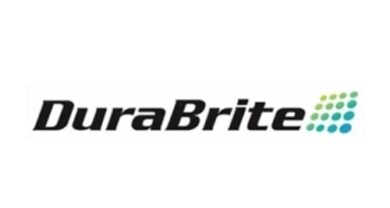NOAA Considers Lifting Striped Bass Moratorium
The U.S. Department of Commerce’s National Oceanic and Atmospheric Administration is nearing a decision on whether to lift its 15-year moratorium on harvesting Atlantic striped bass in federal waters, a move that many fear will be detrimental to the now healthy fishery and in turn detrimental to the marine industry.
The moratorium was part of a comprehensive federal/state management plan to restore the fishery, which, by the late 1970s, had collapsed from over-fishing. Federal waters, or the exclusive economic zone as the area is called, fall between 3 and 200 miles from shore.
“We believe that the best thing to do is to keep the EEZ closed. This is a huge success story. The striped bass have come back in numbers that some of the old-timers say they didn’t even see when the fishery was so robust in the 1950s and 1960s,” said Jim Donofrio, executive director of the Recreational Fishing Alliance, New Gretna, N.J. The RFA is a national political action organization whose mission is to safeguard the rights of saltwater anglers; protect marine, boat and tackle industry jobs; and ensure the long-term sustainability of U.S. marine fisheries.
But that recovery is exactly why the Atlantic States Marine Fisheries Commission believes it is time to once again allow recreational and commercial fishing in the EEZ. ASMFC coordinates management of the near shore fishery resources of its 15 member states.
Given its position, the commission asked NOAA to initiate the public process to review the moratorium. NOAA took public comments on the issue until June 26. In addition, a U.S. House of Representatives subcommittee hearing was held on July 27.
NOAA’s decision on the moratorium will be based on a range of factors.
“We consider everything—biological data, economical data, how it might affect the fishing communities…. Every comment that comes in is important,” said Tom Meyer, fisheries biologist with the State-Federal Fisheries Division, in NOAA’s Office of Sustainable Fisheries, located in Silver Spring, Md.
According to Meyer, about 8,200 comments were received, about 7,500 of which were postcards resulting from a direct mail campaign led by RFA. Those 7,500 cards represented about half as many individuals, given that citizens sent duplicate cards to NOAA’s director of fisheries and to the Secretary of Commerce.
RFA’s quest to extend the moratorium is a case of economics, said Donofrio. As he testified to the subcommittee, in 2003 there were 6.5 million marine recreational anglers who spent $2.4 billion on recreational striped bass fishing, resulting in an overall economic impact of $6.6 billion and supporting 60,000 jobs. In addition, trips targeting Atlantic striped bass account for 31 percent of the total number of fishing trips.
“Boat manufacturers, outboard manufacturers, dealers…they are all doing well in the Mid-Atlantic and Northeast based on the striped bass,” he said. “It has helped the industry grow, and we believe that if the fishery is opened up, everyone will be hurt. There is a symbiotic relationship between healthy fisheries, angler success and a robust marine industry.”
Tom Morford, owner of Atlantic Yacht Sales, Middletown, N.J., agrees.
“Our business has quadrupled over the last six years and I have to attribute it mainly to striped bass,” he explained. “If you look at the other fisheries out there, the tuna fishery is just about shut down, the fluke fisheries are minimal at best and they have everything else limited. So if you look at the main fishery right now from Virginia to the Northeast, it is predominantly striped bass.”
Thanks to the abundance of the fishery, striped bass fishing in New Jersey started in early April this year and was still going strong at the end of August. Morford tells of a recent fishing trip where he and his party got 80 striped bass, each from 30 to 40 pounds.
Those critical of lifting the moratorium are primarily fearful of over-fishing by commercial interests, in particular draggers that can quickly capture millions of pounds of fish.
“They can decimate a fishery within 18 months to two years,” Morford says. “It isn’t like these fish are spread out over hundreds of thousands of miles in the ocean. They are very concentrated along the coast, so if you open it up you might as well say goodbye.”
Donofrio points out that the warming of the ocean adds to the fishery’s vulnerability. Years ago, striped bass would winter under frozen rivers and bays along the coast where they were a protected spawning biomass.
“That’s changed now,” Donofrio says. “We are seeing more and more fish in federal water because the water is warmer and there is the availability of feed.
“They are in 90 to 150 feet of water, where they are very vulnerable to mobile gear,” he continued, adding “there were places off of the Jersey coast in the 1960s where the water temperature was 34 and 35 degrees. That’s unheard of today. We never see the ocean that cold anymore.”
The availability of food has changed the migratory pattern as well. In the past, in the fall the fish would migrate closer to the shore, keeping them in state waters where harvesting is well regulated by ASMFC and the state governments. Now, he said, the fish are going directly from Cape Cod and landing somewhere between Cape May, N.J., and Maryland, and wintering out there in the federal waters.
“Management should remain tight,” Donofrio says. “There is plenty of opportunity for recreational fishermen to access the fishery in state waters, and mortality by commercial fisheries can be much better controlled in state waters than out there in no man’s land.”
ASMFC reports that the current spawning stock biomass of 55 million pounds exceeds target levels by more than 15 million pounds and that there has also been an increase in age structure, which strengthens the reproductive capacity of the stock.
Over 3 million fish are harvested each year. The commercial fishery accounts for 28 percent, generating more than $12 million a year, while recreational anglers account for 72 percent.
Should the moratorium be lifted, NOAA will work with ASMFC to monitor the effects of commercial and recreational fishing in the EEZ.
“We’ll work with them on the various boards, stock assessments and committees to monitor what is happening with striped bass,” Meyer says. “We consider our state partners to be important. Our regulation would probably stipulate that the more restrictive regulation would take effect. In other words, if the state regulation were more restrictive than that in the EEZ, when the boat crossed into state waters that state regulation would be enforced. We try to work with the states so that we don’t affect their regulations in their state waters.”
Should the moratorium hold, both Donofrio and Morford expect that the issue will come around again.
“It’s all about politics,” Morford said. “It will be brought up again.”




